The Pigeon Council is a super-secret organization that strives for a world where more people play and appreciate the Bird's Opening. In this page, you'll find a guide for you to play this opening, and a couple tips on how to morally defend from your opponent when they start laughing at you.
Derp is delighted to announce his discovery that the Bird is also known as the Dutch Attack.
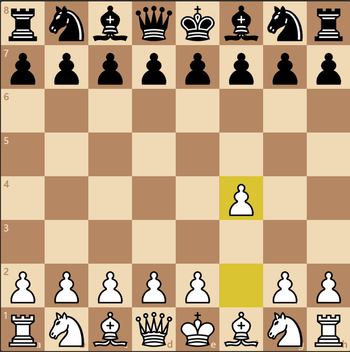
A little background
The Bird's opening was created by our Lord and Saviour Henry Bird, way back in the 19th century. The main idea of this opening is to provide the player with open diagonals for both bishops, giving them a quick setup for an early aggression and, if their opponent doesn't know what they're doing, a devastating attack. The Bird is very unpopular and is not reccomended when playing stronger opponents, since it weakens your king side and black has very good chances to wreck white's position. Grandmaster Roman Dzindzichashvili has even gone as far as to say that Bird's Opening is for lazy players who don't want to study chess theory.
Main line
Bird's opening comes to life when the player with the white pieces plays 1.f4 (See image above). This move will generally surprise black, for the following reasons:
- Black is a new player.
- Black can't believe his luck and directly strikes at the center with, say, d5.
A true Bird's player will continue with the main line 'no matter what' (unless black tries From's Gambit, we'll get to that). The following shows only white moves:
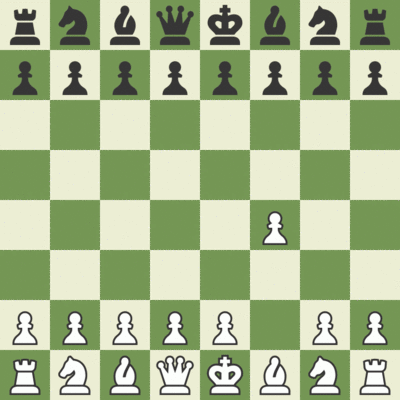
The picture above shows the ideal setup. The white square bishop has been traded, the king is safe and both the black square bishop and a rook are ready to jump in. Note that black might not always choose to trade bishops in move 5, they can still block the check with their knight or the c pawn, in which case white must either continue with their development or move the bishop away.
White's black square bishop is very powerful and incredibly important. The best approach is to safeguard it and to keep its diagonal clear.
Moves 6 and 7
Your ideal 6th move would be the one shown in the game above, looking to trade the white square bishop. Black can always choose to block the check with a knight or a pawn. If they block with the knight, you can safely continue with your development, either reinforcing your center or activating the other knight. If they block with the C pawn, move your bishop away, otherwise you'll already be down on material and things can get pretty nasty pretty quickly.
If the bishops are traded, your next move should be a king-side castle, activating your rook.
From's Gambit
The Bird player has to be extremely cautious when their opponent plays e5 as their first move. For you see, if white takes that 'free' pawn, they can start saying goodbye from the match. Here are two slightly different games for you to check:
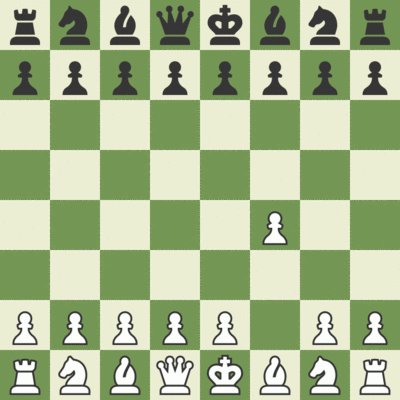
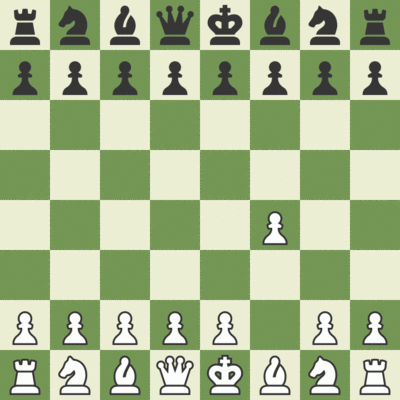
Pretty cool, eh? Actual players and theorists argue that the best way for white to stay safe is to transpose to a King's Gambit on move 2, which would look like this: 1.f4 e5 2.e4
Moral defence
A wise man once said: "Everyone who sees the Bird is like wtf. And then they play normal chess and win".
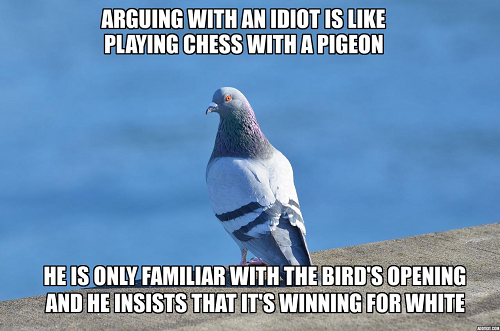
To play the Bird, you must accept it as a part of your life. Never surrender. Never accept other openings. Become the Bird.
